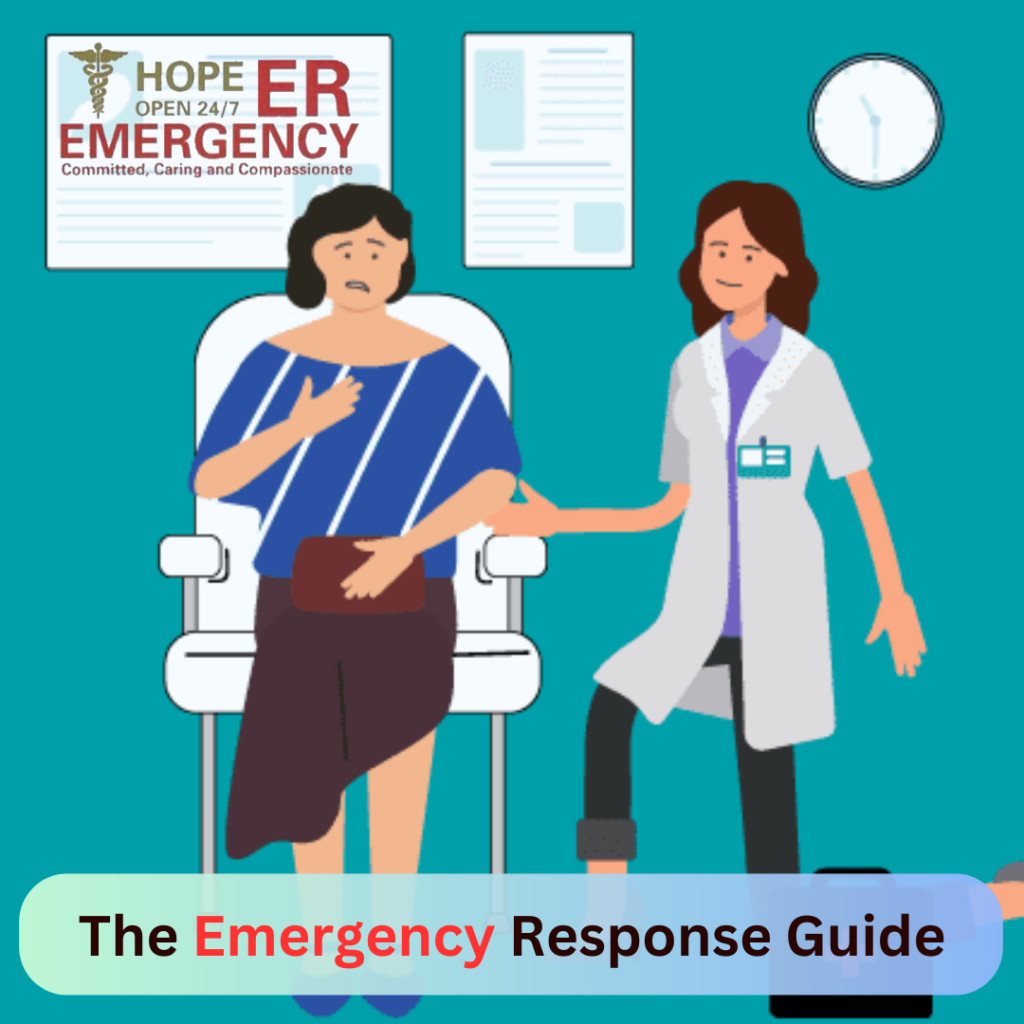Medical care emergencies can arise at any time of the day. There are clearly numerous establishments in your town but which one to choose at the time of health condition, is an important decision to make. Mild conditions and other chronic conditions can be taken care of by your primary care providers but when the medical case falls into the categories of severe influenza, fracture, headaches, abdominal pain, etc., then comes the need to have a quick emergency care service.
A Medical Emergency Response Guide provides essential information and instructions for responding to various medical emergencies.
Here’s a basic outline of what such a guide might include:
- Introduction: A brief overview of the purpose of the guide and its intended audience.
- Emergency Contact Information: Provide emergency contact numbers for local emergency services, including ambulance, police, and fire department. Include any specific instructions for contacting emergency services in your area.
- Basic First Aid Techniques: Include step-by-step instructions for administering basic first aid techniques, such as CPR, treating burns, controlling bleeding, and managing fractures or sprains. Provide illustrations or diagrams where applicable to demonstrate proper technique.
- Signs and Symptoms of Common Medical Emergencies: Outline the signs and symptoms of common medical emergencies, such as heart attack, stroke, allergic reactions, diabetic emergencies, seizures, and choking. Include information on how to recognize these emergencies and what actions to take.
- Emergency Action Plan: Provide a general emergency action plan that outlines the steps to take in the event of a medical emergency. This may include assessing the scene for safety, calling for help, providing first aid, and comforting the individual until help arrives.
- Specific Medical Conditions and Emergencies: Include information on specific medical conditions that may require immediate attention, such as asthma attacks, severe allergic reactions (anaphylaxis), hypoglycemia (low blood sugar), and heat-related illnesses. Provide guidance on how to recognize these conditions and appropriate first aid measures.
- Emergency Supplies and Equipment: List essential supplies and equipment that should be kept on hand for responding to medical emergencies, such as first aid kits, AED (automated external defibrillator), emergency medications (e.g., epinephrine auto-injectors), and personal protective equipment (e.g., gloves, masks).
- Training and Education: Encourage readers to seek training in first aid and CPR to better prepare themselves to respond to medical emergencies. Provide information on local training resources, certification programs, and refresher courses.
- Emergency Evacuation Procedures: If applicable, include emergency evacuation procedures for medical emergencies that require moving individuals to a safer location, such as fires, chemical spills, or natural disasters.
- Additional Resources: Provide references to additional resources, such as online guides, instructional videos, mobile apps, and community organizations that offer support and education on emergency preparedness and response.
It’s important to tailor the guide to the specific needs and requirements of the target audience, whether it’s for workplaces, schools, community organizations, or households. Regularly review and update the guide to ensure it remains accurate and relevant to current best practices in emergency medical care.
We at Hope ER, have a team of professional & compassionate staff. Get assistance for a quick and quality treatment for quick relief from pain and signs and symptoms. Hope ER’s aim is to serve our patients and give the best possible treatment in the shortest span of time in a quick and effective way.
We are located at 2111 East Denman Avenue, Lufkin TX 7591, and can be reached @ 936-899-7243. Our website is www.hopeer911.com
